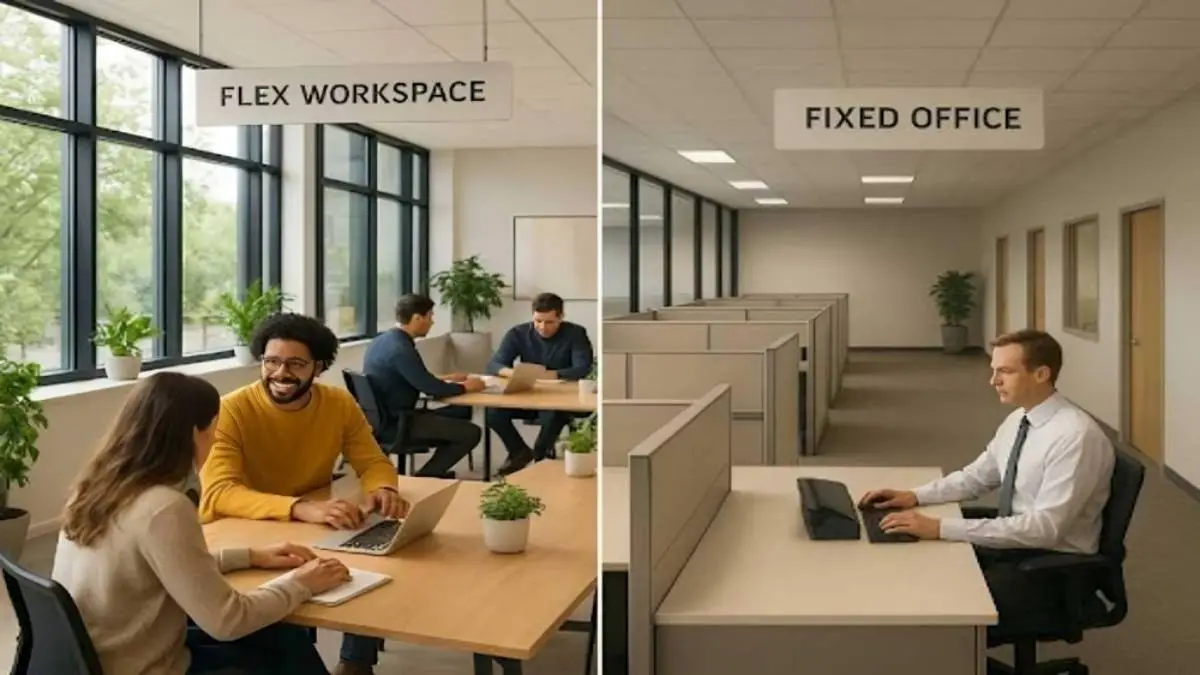GENERAL
Shared Office Space Vs. Traditional Offices: Which Is Right For You?

Navigating the rapidly changing world of work, organisations, and professionals are faced with more workplace options than ever. The decision between a shared working space often known as a coworking space and a traditional private office setup can determine everything from agility to operational costs and company culture. Understanding the subtle but impactful distinctions between these workspace solutions is pivotal for meeting your workspace needs, whether you’re leading a Fortune 500 enterprise, scaling a startup, or freelancing.
Table of Contents
Understanding Shared Office Spaces: What Are They?
A shared office space, frequently called a coworking space, is a dynamic environment where individuals and businesses share access to office infrastructure, resources, and often, a collaborative atmosphere. These workspace solutions are fueled by a spirit of community and flexibility, offering a spectrum of workspace types, such as hot desks for workspace for the day, dedicated desks, fully furnished offices, team workspace, and move-in ready offices for instant occupancy.
Key Features of Shared Working Space
Flexible Workspace
Professionals can access pay-as-you-go coworking, workspace for freelancers, or branch into team workspace options that grow with your business. This is made easy through coworking membership models, flexible office plans, and the ability to scale up or down as business needs change.
Professional Amenities & Workspace Technology
Shared workspaces deliver professional amenities on par with top-tier traditional setup meeting rooms equipped with advanced workspace technology, reliable Wi-Fi, communal kitchens, and enterprise-grade printing.
Defining Traditional Offices: Structure and Set-Up
A traditional office space is typically a leased or owned property dedicated exclusively to one company. The structure includes private offices for executives, open workspace for teams, customised meeting rooms, and bespoke workspace amenities.
Hallmarks of the Traditional Business Office
Privacy and Control
The primary draw for traditional office space is privacy. Turnkey offices are outfitted according to a company’s specific branding, with total autonomy over workspace management, layout, and daily operations. This offers a sense of workspace simplicity and control that some businesses and their clients prefer.
Dedicated Workspace for Businesses
Unlike flexible workspace options, traditional offices are less about workspace access flexibility and more about permanent, exclusive use. This appeals to established businesses with stable headcounts and fixed workspace needs, such as legal firms or corporate headquarters.
Cost Comparison: Expenses, Savings, and Hidden Fees
Costs Associated with Coworking Space
Workspace Cost Savings
With a shared working space, the bulk of operational costs utilities, cleaning, workspace amenities, workspace technology upgrades are included in your coworking membership fee or workspace rental cost. This workspace makes a simple approach that allows startups and freelancers to avoid large upfront investments.
Hidden Fees to Watch
Some workspace providers charge extra for premium meeting rooms or workspace booking, printing, or workspace for the day upgrades. Always scrutinise workspace plans for transparent terms.

Expenses in Traditional Offices
Upfront and Ongoing Costs
Traditional business office leasing carries significant initial outlays: security deposits, customisation, IT infrastructure, and purchasing furniture. Ongoing costs include utilities, maintenance, workspace management, and workspace expansion as headcounts grow.
Potential Hidden Costs
Workspace management inefficiencies underutilised desks, energy waste can further inflate costs. Real estate solutions with space management technology can curb some waste, but this often involves additional investment.
Workspace Cost Savings: Who Benefits Most?
For dynamic teams or companies implementing a hybrid strategy, flexible workspace offers lower financial barriers and a team workspace that’s adaptable to workspace trends. Enterprises with stable growth projections may benefit from traditional space in the long term, despite the initial investment.

Making the Choice: Key Factors to Consider for Your Business
Assessing Your Workspace Needs and Workspace Plans
Analyzing workspace needs is the first step. Consider the size and nature of your team, preferred workspace types, and the role of workspace flexibility in your daily operations. Businesses experimenting with hybrid strategy models benefit from team workspace and workspace for the day options, while organisations with strict privacy requirements may prefer private offices or dedicated furnished offices.
Workplace Members and Workspace Membership Models
Evaluate whether a workspace membership suits your business office culture. Organisations with transient teams or frequent travel across global locations may benefit from network-based offerings like WeWork All Access, while local businesses can optimise workspace cost savings through desk sharing or workspace reservation systems.
Location, Resources, and Expansion Potential
Office space location is pivotal; proximity to clients, partners, and transportation contributes to business success. Workspace solutions offering an extensive workspace network such as those in major metro areas with rapid workspace expansion capabilities meet evolving workspace needs. Compare workspace amenities, workspace booking flexibility, and workspace management practices across providers.
-

 GENERAL5 months ago
GENERAL5 months agoChristofle – For Those Who Dream of Family Heirloom Silver
-

 SPORTS7 months ago
SPORTS7 months agoDiscover the World of Football with Streameast: Watch Your Favorite Leagues and Tournaments
-

 GENERAL3 months ago
GENERAL3 months agoUncovering the World of кинокрадко: The Dark Side of Film Piracy
-

 GENERAL1 month ago
GENERAL1 month agoATFBooru: Anime, Gaming, and Subculture Imageboard























